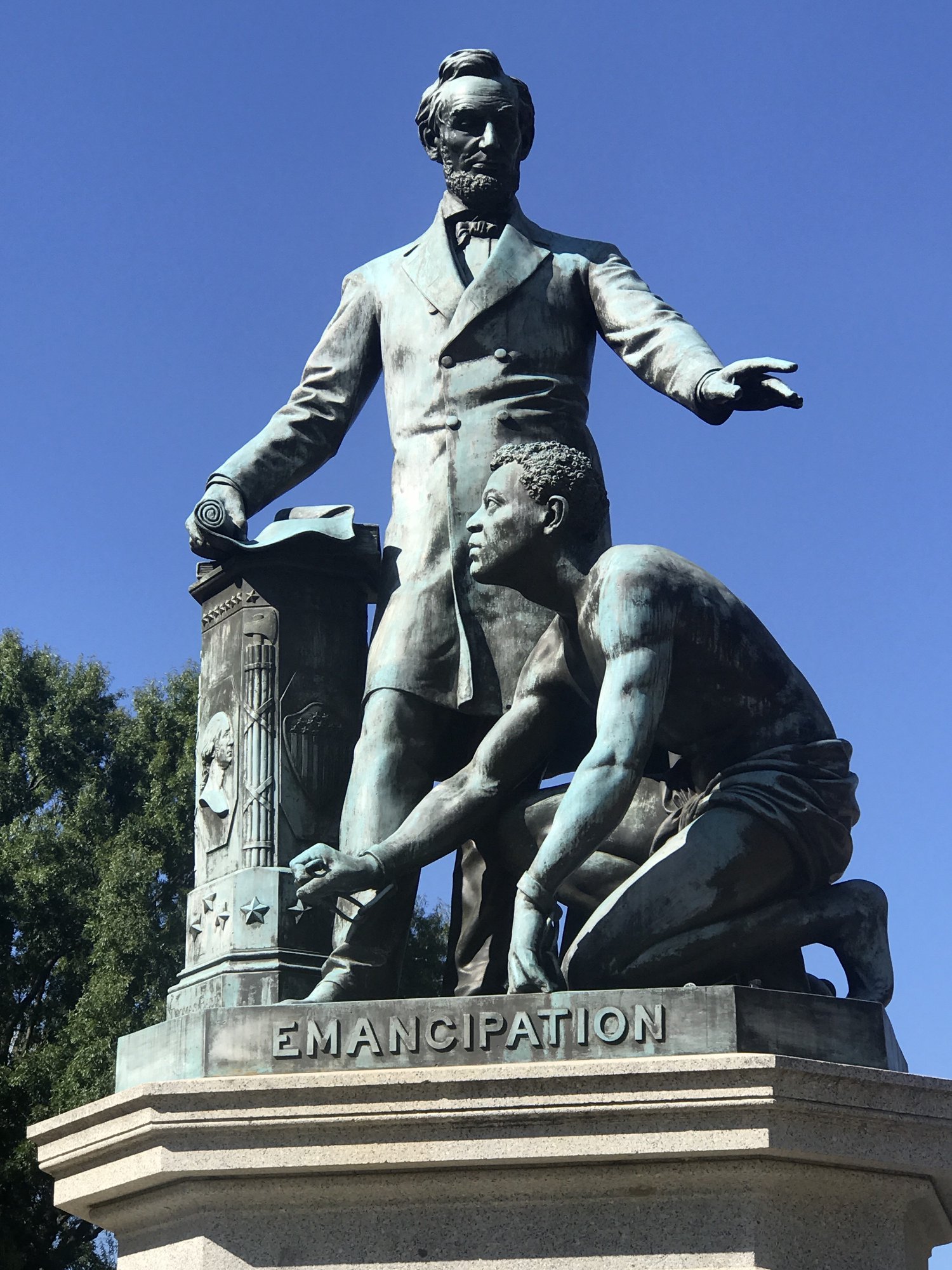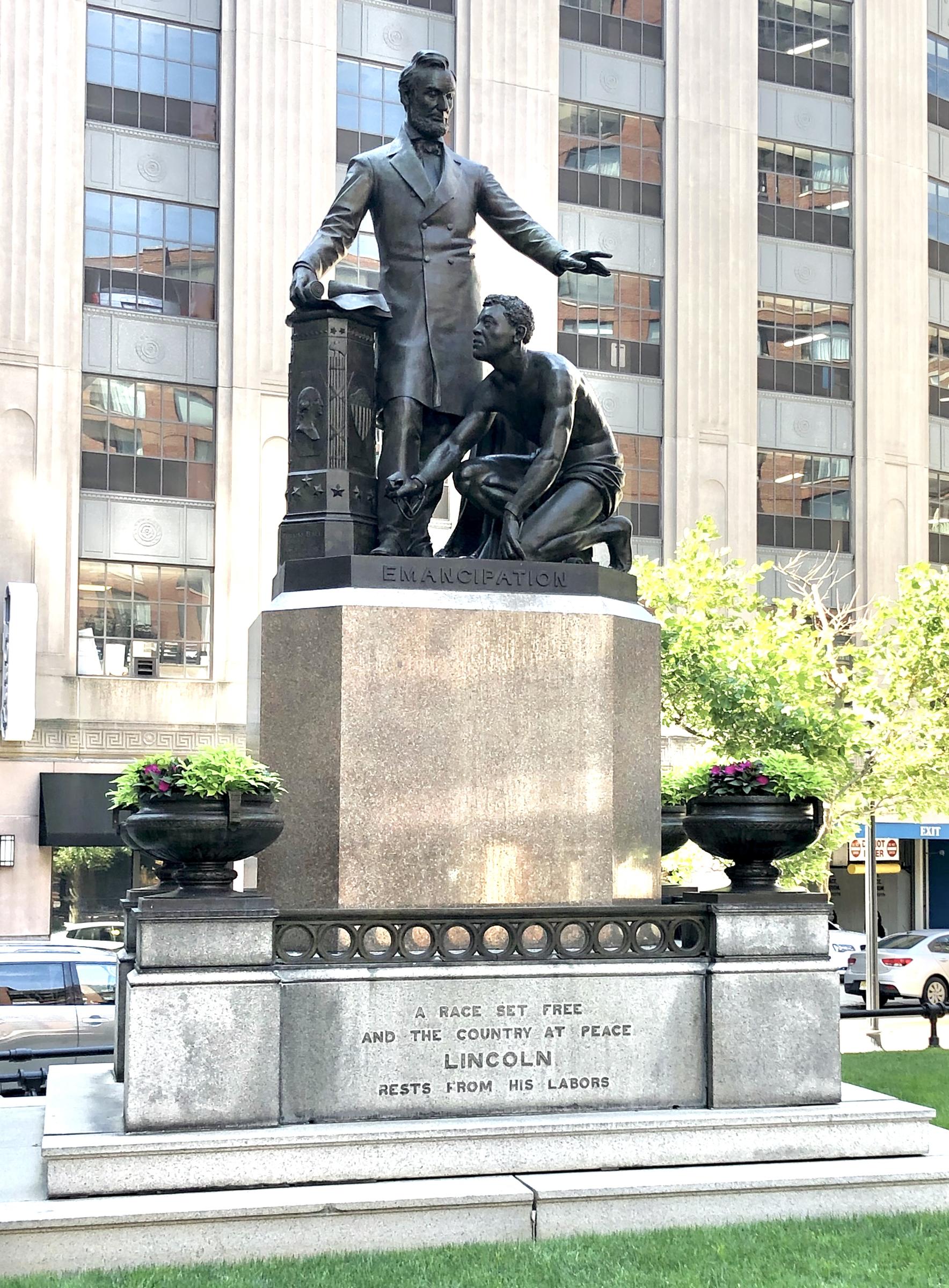Emancipation Group
Public Art Update: The statue was removed on December 29, 2020. It will be held in storage as we seek a new location. Please share your ideas.
"Emancipation Group" was removed following a unanimous vote by the Boston Art Commission. The vote was informed by an extensive public process and a petition that garnered 12,000 signatures. Through the public engagement process over the summer of 2020, the Boston Art Commission:
- heard five hours of verbal testimony during two hearings
- received more than 160 letters, and
- gathered 645 survey responses.
The decision for removal acknowledged the statue’s role in:
- perpetuating harmful prejudices, and
- obscuring the role of Black Americans in shaping the nation’s freedoms.
Get involved
We’re seeking ideas and comments on the future location of "Emancipation Group," and the future for the site. You can submit written or video feedback, or send an illustration of your ideas.
About the artwork
"Admirable as is the monument by Mr. Ball in Lincoln park, it does not, as it seems to me, tell the whole truth, and perhaps no one monument could be made to tell the whole truth of any subject which it might be designed to illustrate."
— Frederick Douglass, 1876 letter to the editor of the National Republic
Boston’s replica was installed in 1879. It was a donation to the City from Moses Kimball, a politician and founder of the Boston Museum. Ball’s statue depicts a mostly undressed Black man with broken shackles, rising from his knees beside a suited, standing Abraham Lincoln. Lincoln holds the Emancipation Proclamation in his right hand.
Symbols of enslavement are on display, including a whipping post and chains. The kneeling figure is based on a photograph of Archer Alexander. The formerly enslaved man helped the Union Army before seeking freedom for himself and his family. While he was recaptured several times under the Fugitive Slave Act, Alexander managed to escape and evade his abductors until the passage of the 13th Amendment.
Examining the artwork
"Emancipation Group" has been criticized since its installation in 1879 for deficiencies in its design. Over time, there have been many calls for removal or re-contextualization of the statue. A 2018 study of the City’s art collection by the Boston Art Commission recommended its removal and relocation to a museum or educational setting. The commission initiated a public review in June 2020. The process included:
- public testimonials across two hearings
- comments made in more than 160 letters, and
- 645 survey responses.
The vast majority of input from the public favored removal and the commissioning of a new artwork. A petition by Boston artist Tory Bullock gained more than 12,000 signatures to remove the statue.
The City of Boston and the Boston Art Commission recognize the significant cultural influence of public art. Boston’s art collection needs to accurately and responsibly reflect the:
- City’s residents
- values of its communities, and
- history of the City and its people.
On June 30, 2020, after five hours of verbal testimony and discussion, the Boston Art Commission voted unanimously to document and remove "Emancipation Group". The City began a process to relocate it to a new location where it could be better explained. The decision acknowledged the statue’s role in perpetuating harmful prejudices and obscuring the role of Black Americans in shaping the nation’s freedoms. As Frederick Douglass noted in his 1876 letter criticizing the statue, the figure of Alexander, “though rising is still on his knees and nude.” The statue was removed on December 29, 2020, and will be held in storage as we seek a new location.
You can learn more about the Boston Art Commission’s process to re-examine the City’s public art collection online. Join the conversation by making suggestions for the relocation of "Emancipation Group", and the future of this site.
Starting this winter, the City of Boston and Boston Art Commission will begin a series of virtual panel discussions and short-term art installations. We will examine and reimagine our cultural symbols, public art, and histories.
"Public art is storytelling at the street level. As such, the imagery should strike the heart and engage the mind. What I heard today is that it hurts to look at this piece, and in the Boston landscape we should not have works that bring shame to any group of people, not only in Boston but across the entire United States."
— Ekua Holmes, Boston artist and Vice-Chair of the Boston Art Commission, at the June 30, 2020, public hearing



